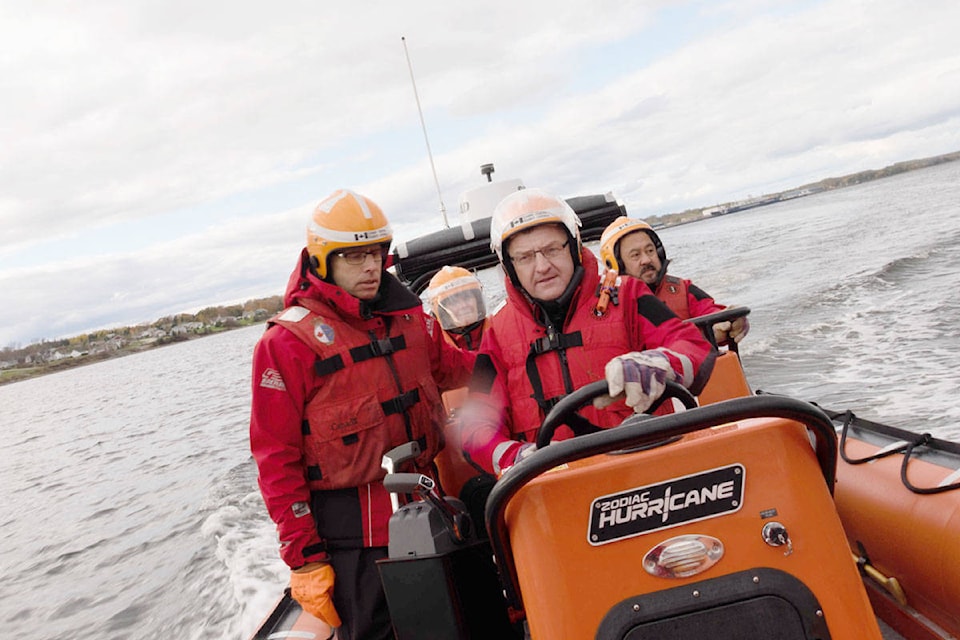The commercial fishing industry sees an average of one death every month.
In a report Thursday, the Senate Committee on Fisheries and Oceans found the commercial fishing industry has the highest death rate out of any other employment sector in the country.
In 82 pages, When Every Minute Counts looks into the maritime search and rescue missions from coast to coast to coast.
“We’re very proud of the report that we published today and introduced into the senate, and we hope that it will make a difference in increasing the safety of the people on the water,” said Marc Gold, deputy chair, on the Standing Senate Committee on Fisheries and Oceans.
The committee makes 17 recommendations after examining maritime search and rescue activities to discover challenges and opportunities. The fact-finding began in May 2016.
Four of the recommendations directly apply to the commercial fishing industry, including working with fish harvesters and safety organizations to develop a national action plan in the next three years.
READ MORE: Commercial diver from Prince Rupert drowns in Hecate Strait
Despite the decline in the fishing industry, the committee found the number of deaths is consistent every year.
Many factors contribute to this high death rate, including a lack of safety and survival equipment, hostile marine environment, unsafe operating practices, fatigue from long hours and human error.
One of the challenges in search and rescue missions is locating smaller fishing vessels — which makes up most of the commercial fishing fleet — as they are not required to carry tracking devices.
“In many communities it’s really the smaller boats that do so much of the work and are out on the sea,” Gold said.
Transport Canada enforces all vessels of a certain size to carry emergency position-indicating radiobeacon stations (EPIRBs) on board, allowing SAR crews to locate the ship. Many times, EPIRBs have built in GPS systems as well, which gives SAR more accurate tracking for the ship in distress.
The committee recommends that all fishing vessels of all sizes carry an EPIRBs, which cost between $250-$1,000 per beacon. To give vessel owners a chance to pay for the device, there is a two-year grace period suggested before its made mandatory.
“We strongly believe that the mandatory use of these devices will save lives and one of the great problems in search and rescue is timing,” Gold said. “These devices allow us to locate the boat in distress quickly and if we can get to the boat quickly, as opposed to having to circle around and search in often terrible weather at night, we can save lives.”
This recommendation was also made in 2000 by the Transporation Safety Board of Canada.
READ MORE: Crab-fishing boat runs aground on Rose Spit
Another potential safety hazard is how Fisheries and Oceans Canada manages the commercial fishing industry.
The committee heard examples of varying safety hazards, such as opening of fishing season despite unstable weather conditions, requiring harvesters to empty their crab traps within 48 hours of setting them, and allowing two licence holders to fish together on one vessel, which is not allowed in all fisheries.
“Some of the rules and regulations developed by the department – even though in consultation with fish harvesters – have, in the past, led to maritime injuries and fatalities and some continue to create safety risks,” the report said.
The committee recommends DFO gives priority to fish harvester safety when considering regulations and practices.
In B.C., the Joint Rescue Coordination Centre in Victoria coordinates all rescues along the West Coast. In 2017, it reported 2,122 maritime-related incidents.
Helicopter rescue pilot project
There is no dedicated search and rescue air base in the north, where the report said has a higher number of incidents.
In 2017, there were more than 6,100 search and rescue missions in Canadian waters, and the committee expects the number to grow as warming temperatures increase accessibility in the north. Newfoundland and Labrador have twice the national average of search and rescue incidents.
The committee recommends setting up a private helicopter base in the north as well as Newfoundland and Labrador. Currently, search and rescue air bases are on the East Coast and southern Ontario.
Next steps
The standing committee has tabled the report and introduced it to the senate. Members of the committee are now trying to share the underlying message of the report, and to ensure the government takes the recommendations to heart.
“We’re going to hold the government to account and monitor carefully how seriously they take the recommendations,” Gold said.
“We want to see them translated into concrete action because as we say in the title of our report ‘Every minute counts’ and it sounds like a cliché but it translates into saving lives and that’s what’s really important.”
shannon.lough@thenorthernview.com
Like us on Facebook and follow us on Twitter
